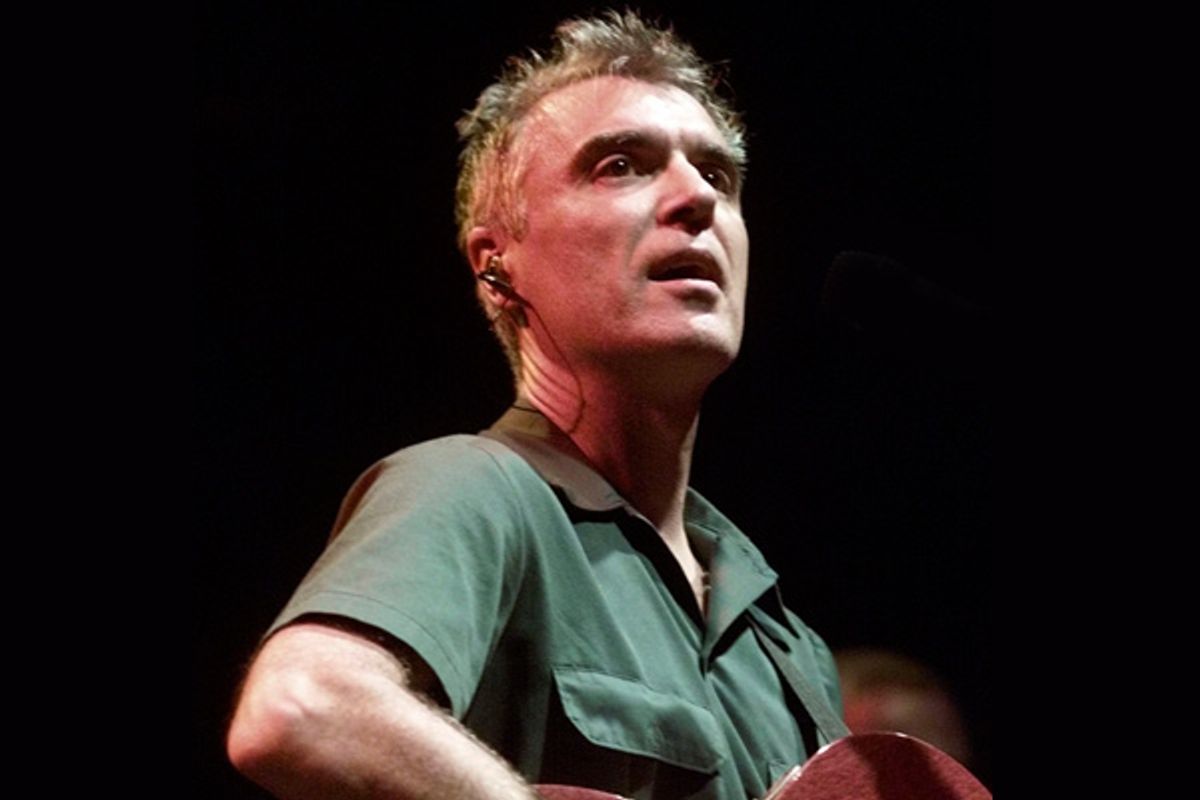The phrase "starving artist" may be a cliche, but the ability of creators to afford a living is a serious concern. Great artists are often known alongside their patrons: Shakespeare and Queen Elizabeth, Michelangelo and Lorenzo de Medici. Today, the great patrons, like YCombinator, are more interested in funding technology: the excitement is about tech geniuses, and financial whizzes, not artistic geniuses or great writers. And so greatness is measured in dollars.
As the gap between the rich and the poor widens to a chasm, will creators be able to afford to flock to urban hubs like New York? What will happen to great artists and cities if they can't?
Talking Heads frontman and all-around creative guy David Byrne aptly addressed these issues in an op-ed originally posted yesterday on Creative Time Reports and republished by The Guardian. Byrne acknowledges that being an artist has never been easy -- even in the glorified New York 70s culture. But certain things were more prevalent then, like affordable housing and the idea that being a poor artist was something worthwhile. Byrne puts it beautifully here:
The city is a body and a mind – a physical structure as well as a repository of ideas and information. Knowledge and creativity are resources. If the physical (and financial) parts are functional, then the flow of ideas, creativity and information are facilitated. The city is a fountain that never stops: it generates its energy from the human interactions that take place in it. Unfortunately, we're getting to a point where many of New York's citizens have been excluded from this equation for too long. The physical part of our city – the body – has been improved immeasurably. I'm a huge supporter of the bike lanes and the bikeshare program, the new public plazas, the waterfront parks and the functional public transportation system. But the cultural part of the city – the mind – has been usurped by the top 1%.
What, then, is the future of New York, or really of any number of big urban centers, in this new Gilded Age? Does culture have a role to play? If we look at the city as it is now, then we would have to say that it looks a lot like the divided city that presumptive mayor Bill de Blasio has been harping about: most of Manhattan and many parts of Brooklyn are virtual walled communities, pleasure domes for the rich (which, full disclosure, includes me), and aside from those of us who managed years ago to find our niche and some means of income, there is no room for fresh creative types. Middle-class people can barely afford to live here anymore, so forget about emerging artists, musicians, actors, dancers, writers, journalists and small business people. Bit by bit, the resources that keep the city vibrant are being eliminated.
This city doesn't make things anymore. Creativity, of all kinds, is the resource we have to draw on as a city and a country in order to survive. In the recent past, before the 2008 crash, the best and the brightest were lured into the world of finance. Many a bright kid graduating from university knew that they could become fairly wealthy almost instantly if they found employment at a hedge fund or some similar institution. But before the financial sector came to dominate the world, they might have made things: in publishing, manufacturing, television, fashion, you name it. As in many other countries, the lure of easy bucks hoovered this talent and intelligence up – and made it difficult for those other kinds of businesses to attract any of the top talent.

Shares